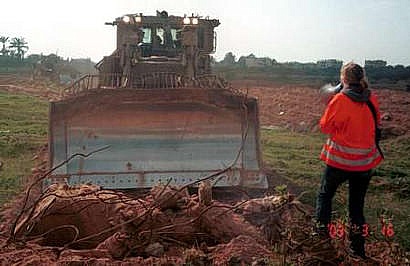Tag: House Demolition
-
I can’t sleep
By Abu Sarah 31 August 2012 | International Solidarity Movement, West Bank “I can’t sleep. As soon as I close my eyes, I see settlers everywhere.”, says Amer the six years old son of my friend. Omar leaves his mattress and joins me outside, where I’m watching the beautiful full moon. This evening Amer’s father is…
-
Rachel Corrie: Blaming the victim
Attorney Hussein Abu Hussein, who represented Rachel Corrie’s family in its suit against Israel, says they knew from the beginning that it would be an uphill battle to find truth and justice in an Israeli court. By Hussein Abu Hussein 02 September, 2012 | Haaretz On Tuesday, Judge Oded Gershon of the Haifa District Court…
-
House demolitions and forced displacments in Area C
By Abu Sarah 2 September 2012 | International Solidarity Movement, West Bank Demolishing tents donated by the UN On August 28 Israeli occupation forces demolished tents donated by the United Nations (UN) in the Palestinian village of Susiya in the South Hebron hills. This is the second similar demolition within three months. Displacement in Zenuta…

